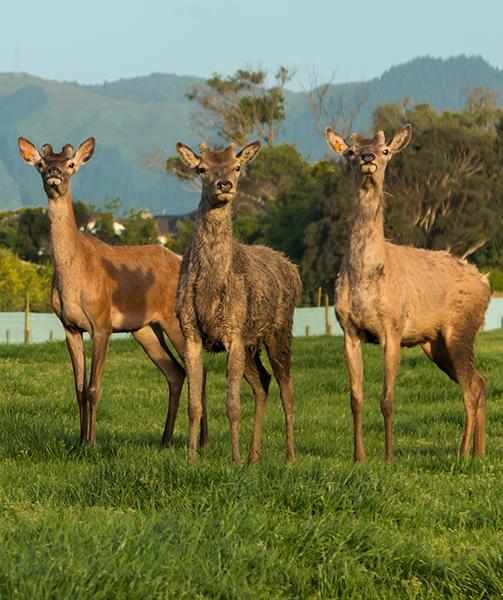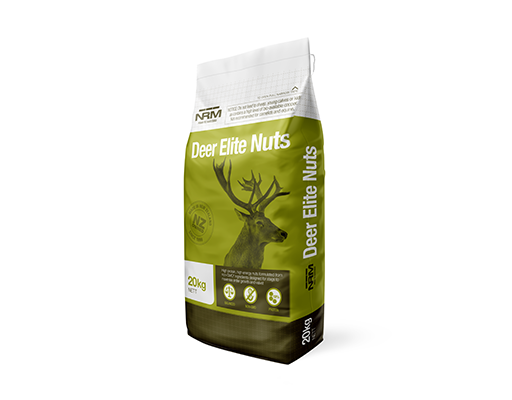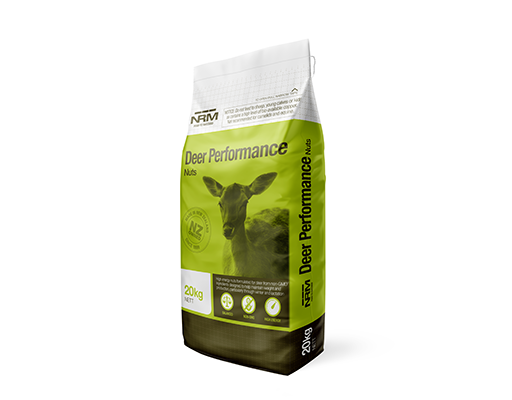Farmed Deer - Ruled By Their Biological Clock
Of all the farmed species, deer are governed the most by their biological clock. Feeding must be tailored to the natural rhythms of the seasons to optimise performance.
Lean mean growing machines, deer really need good quality feed to perform well in terms of reproduction, growth and maximum antler production.
Red deer hinds initiate ovulation and oestrous in mid to late March. Although hinds can produce a calf annually to an age of 15-17 years, reproductive wastage is one of the biggest causes of lost revenue potential. With few twins to make up for non-calvers, on average adult hinds wean 84-86 calves per 100 hinds mated, compared to about 70-75 for first calvers.
Good nutrition can optimise conceptions early in their season, which increases the chance of earlier- born calves reaching acceptable weights at weaning time the following season. The principal cause of failure is considered to be poor nutrition and low body condition score. Ensure hinds are in good body condition score (Body Condition Score >3.5) prior to and during mating. A BCS <3 is associated with a delay to mating and reduced conception.
Outside of extensive and hill country farms, pre-rut weaning of calves allows hinds to divert feed from lactation to improving BCS. Weaning early can help to reduce the total feed demand, which may be important in a dry season. Improved feeding needs to start three to four weeks before the mating season starts to have a chance of hinds gaining the 10kg liveweight or so required per BCS gain. Infertile, sub-fertile or low-libido stags can be part of the problem, so it’s important they have body reserves to see them through the rut.
Feeding supplements to hinds before weaning supports milk production and helps to associate the fawns with the feed, which can be continued post-weaning for both the weaners and hinds if necessary. If feed is short, some dominant animals will gorge supplementary feed even when spread out, and shy feeders may need to be separated.
Weaners present the challenge of reduced appetite through the winter, so it is recommended to monitor growth rates against targets and change management if needed. Live weight on 1 June can be a good indication of the potential slaughter weight and date. Stress associated with weaning, parasitism, trace mineral deficiencies and underfeeding can increase susceptibility to yersiniosis.
As in the dairy industry, PKE has found a role within the deer sector to help fill a simple feed deficit. For higher levels of production, nutritional complexity is normally a good thing and now improved blend availability offers a range of options, right through to fully compound feed. Whilst energy is normally the first limiting factor for growth, hinds and weaners that have fallen behind targets may also benefit from additional protein, minerals, trace elements and vitamins.
NRM deer feeds offer the advantages of processed grains delivered with major minerals, trace elements and vitamins, in addition to a range of protein levels to suit need. Formulated in response to the Cervena standard, NRM has two products for deer which have been formulated free from non-genetically modified crops and by-products.
With 12 percent crude protein, NRM Deer Performance Nuts are a good option to complement high protein pasture or forage crops. If pasture quality is impacted by dry weather, NRM Deer Elite Nuts with 16 percent crude protein should be considered for weaners, hinds in milk and stags.




